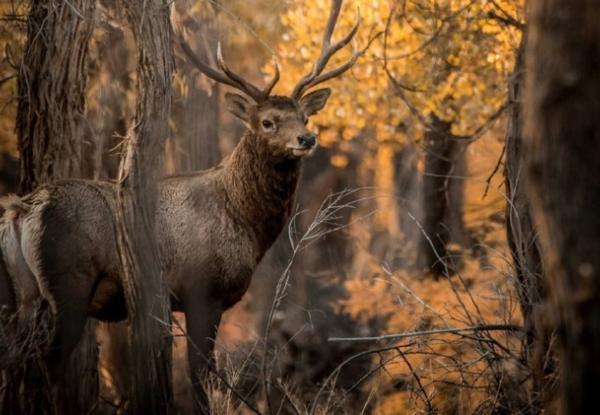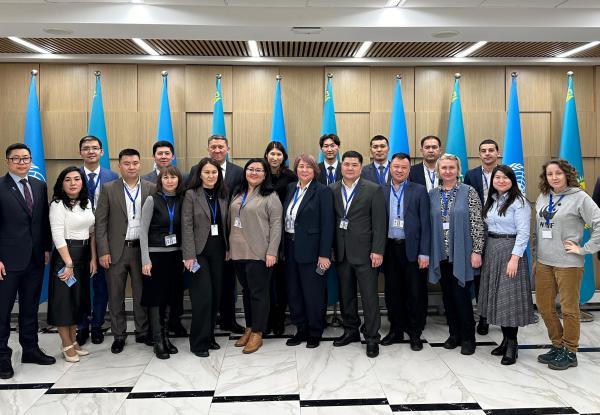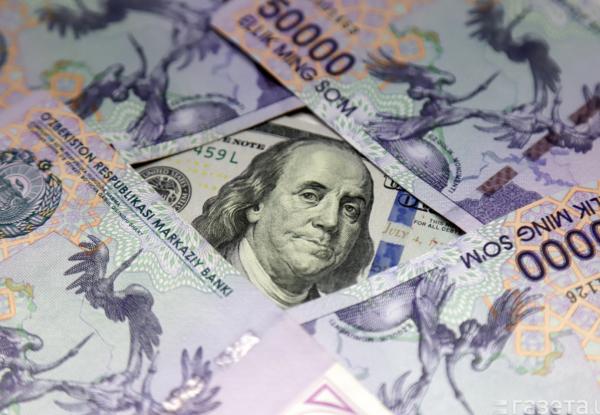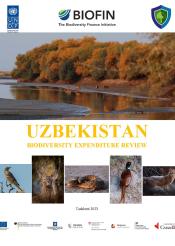Uzbekistan
Uzbekistan joined the BIOFIN Initiative in 2021. The UNDP Country Office in Tashkent in collaboration the Government of Uzbekistan reviewing its biodiversity finance strategies and policies. The project employs a participatory and inclusive approach to ensure the interests of a wide range of local stakeholders in the process, including the public, non-governmental and private sectors. In particular, the BIOFIN Uzbekistan project team works in close collaboration and coordination with the relevant ministries and agencies (natural resources, economy and finance, forestry, hydrometeorology, agriculture, and water), as well as with civil society organizations (birds protection, beekeepers, and others).
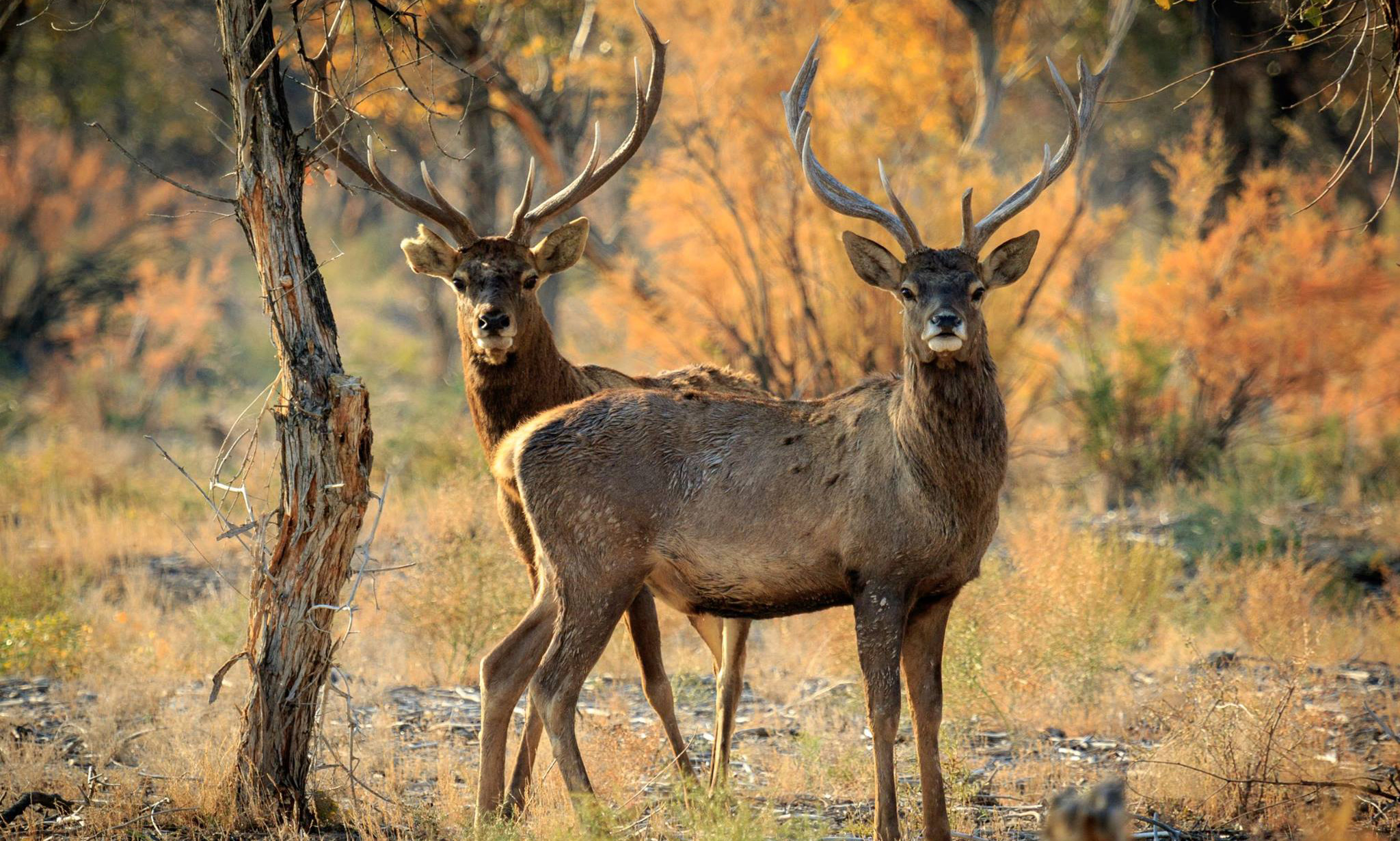
Photo: Endangered Bukhara deers (Lat. Cervus elaphus bactrianus) in the protected tugai forests on the banks of Amudarya river (Source: Meteojurnal)
Uniquely located in the heart of Central Asia, doubly landlocked Uzbekistan has borders with every country of the region and occupies an area of 447.4 thousand square kilometers (about 44.9 million hectares), of which 425.4 thousand square kilometers (42.6 million hectares) or 95% is a land (56th in the world). The diversity of natural conditions in Uzbekistan includes vast plains occupied by different types of deserts, mountain steppes, forests and alpine meadows, tugai thickets and waterbodies. These form characteristic ecosystems that host rich flora and fauna.
Uzbekistan's diverse ecosystems include deserts and semi-deserts (37.1 million hectares or almost 83% of the total area), mountains and foothills (5.2 million hectares or 13% of the land area), the Aral Sea, other rivers and water bodies, forests, etc. Natural landscapes with varying degrees of anthropogenic disturbance on around 82% of the country's territory, including 18% of completely transformed territories (arable lands, settlements, industrial enterprises, etc.). Protected areas make up 12% of Uzbekistan's land.
The climate in Uzbekistan is sharply continental and arid (UNEP aridity index: from 0.02 to 0.62), the country's territory is subject to intensive desertification and droughts. The territory of Uzbekistan is characterized by features of a continental, subtropical climate with large seasonal and daily fluctuations in air temperature. One of the features of the climate of Uzbekistan is a hot long summer.
The scarce water resources of the country are formed by the surface runoff of the major Syrdarya and Amudarya rivers (55%), small rivers (33%), groundwater (about 10%), collector-drainage flow (2%). In total, there are more than 17 thousand natural watercourses in the country, most of which are less than 10 km long. More than 500 lakes of various shapes, sizes and origins are unevenly distributed throughout the country, majority with less than 1 km2 surface area. Climate change, coupled with growing economic activity in the region, further exacerbate water scarcity in Uzbekistan, resulting in increased duration and frequency of droughts and posing serious problems for the economy and ecosystems. The total water deficit in Uzbekistan is forecasted to increase from current more than 3 billion cubic meters to 7 billion cubic meters by 2030 and to 15 billion cubic meters by 2050. Over the past 15 years, the availability of water per capita decreased from 3048 cubic meters to 1589 cubic meters.
The biodiversity of Uzbekistan includes about 27 thousand currently known species. Among them, higher vascular plants, mosses, lichens, fungi and algae number about 11 thousand species, representatives of the fauna - more than 15.6 thousand species. The endemism of higher vascular plants in Uzbekistan is about 8%. Relic endemics make up 10-12% of the total number of endemic species.
BIOFIN Uzbekistan team is about to finalize review of political and institutional frameworks, and in the process of analyzing the country’s biodiversity expenditure.
The report examines Uzbekistan’s public biodiversity funding from 2020 to 2022 and forecasts spending for 2024 to 2028. Environmental and biodiversity expenditures are notably low, at 1.62% and 0.5% respectively. It underscores the need for a budget tagging system to align spending with biodiversity commitments, which would enhance data tracking and analysis. The report also outlines three future spending scenarios and offers recommendations for biodiversity conservation.
The report delves into several areas. Firstly, a synopsis of the prevailing environmental policy, legislation, and institutional arrangements which directly or indirectly affect biodiversity conservation, environmental safeguarding, and related legal enforcement. Secondly, it looks at Uzbekistan’s execution of obligations under the CBD and other international biodiversity conservation treaties, and its efforts to expand ecosystem services. Thirdly, the report inspects state subsidies to various sectors and their consequent impact on biodiversity and ecosystem service development. Finally, the report provides for an assessment of the status and trajectories of biodiversity, pinpointing primary adverse trend drivers and proposing mitigation measures.
The Financial Needs Assessment (FNA) for Uzbekistan’s biodiversity sector identifies a funding gap of almost US$60 million for key biodiversity conservation activities envisaged in the current National Biodiversity Strategy and Action Plan (NBSAP) covering the period of 2024-2028. This gap highlights the urgency of securing additional funds to address the most pressing challenges in the protection and sustainable use of natural resources. The FNA makes several recommendations, including increasing domestic budget allocations, engaging more effectively with international donors, and exploring innovative financing mechanisms. Strengthening financial governance and improving tracking systems have been identified as essential for fostering growth in public and private investments in nature. Implementing these strategies is crucial for achieving Uzbekistan's biodiversity goals and ensuring sustainable development.
The Biodiversity Finance Plan (BFP) summarizes all findings from the national biodiversity finance review process guided by the BIOFIN approach. It attempts to present a coherent and comprehensive national approach to biodiversity finance that encompasses a full suite of finance solutions, well beyond the mobilization of new and additional resources, engaging the public sector, private sector, and civil society. The goal is to produce a nationally validated Biodiversity Finance Plan that proposes steps to implement a mix of finance solutions to expand and improve the country’s biodiversity finance and achieve national biodiversity targets. The BFP offers a comprehensive array of financial solutions and implementation strategies to assist the Government in urgently addressing the US$60 million biodiversity financing gap identified by the BIOFIN research in Uzbekistan. If fully implemented under the best-case scenario, the proposed BFP can mobilize up to $3.6 billion by 2034, making a significant contribution to the achievement of national biodiversity conservation objectives.
